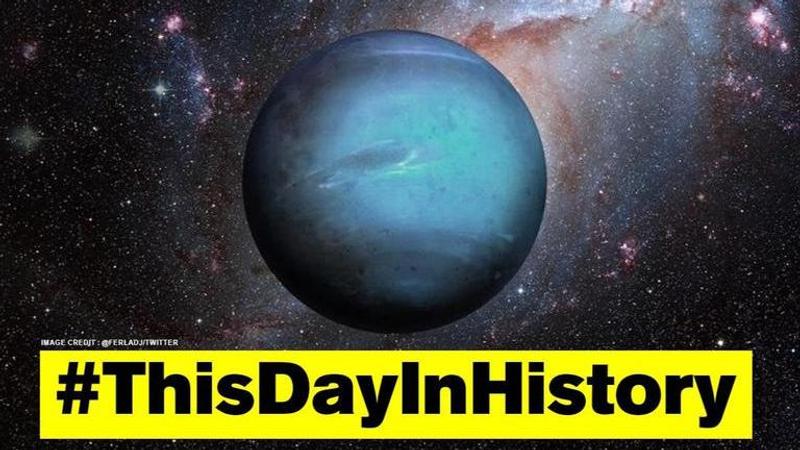Published 16:09 IST, September 23rd 2020
Neptune was discovered on this day in 1846; all about the outermost planet of solar system
The planet Neptune, which is considered to be the outermost major planet in the solar system, was discovered on this day, i.e. September 23, in 1846.

Advertisement
The planet Neptune, which is considered to be the outermost major planet in the solar system, was discovered on this day, i.e. September 23, in 1846. German astronomer Johann Gottfried Galle was the first to observe the third most massive planet, although astronomers Urbain Jean Joseph Le Verrier, and John Couch Adams also worked independently which helped the discovery in 1846.
#OTD 23 September 1846, #Neptune was observed by Johann Gottfried Galle, confirming Urbain Jean Joseph Le Verrier's mathematical prediction of the planet's existence. Neptune had been observed many times in the past but not recognised 👉https://t.co/rynE0HWKJ0 pic.twitter.com/CdVDVdHiKg
— ESA space history (@ESA_History) September 23, 2020
Neptune is the eighth and the outermost planet from the Sun. Because of its great distance from Earth, it cannot be seen with unaided eyes. While it can be observed with the help of a telescope, its discovery, however, did not come solely through the use of it. It was noted that astronomers analysed data related to Uranus’ orbit and found discrepancies in its position - the planet was not quite where it was mathematically predicted to be.
The problem with the orbit of Uranus caused astronomers to begin speaking of another possible planet beyond it. French astronomer Urbain Jean then began using mathematics to try to locate mystery planet’s position in June 1845. The British astronomer Adams, on the other hand, was also working on the same problem, however, neither knew of the other’s calculation.
(Image: @KnowledgeEWorld/Twitter)
Four times the size of Earth
It was on September 23, 1846, that Galle’s calculations found Neptune. Its discovery was a remarkable combination of the application of solid Newtonian physics and a belief in a numerological scheme that later proved to be scientifically unfounded. It was observed that Neptune’s orbit is almost perfectly circular, as a result, its distance from the Sun varies comparatively little over its nearly 164-year period of revolution.
(Image: @flormasom/Twitter)
Neptune is almost four times the size of Earth but slightly smaller than Uranus. The planet mainly consists of hydrogen, helium, water and other volatile compounds, along with rocky material, however, it has no solid surface. Neptune receives less than half as much sunlight as Uranus, but heat escaping from its interior makes it slightly warmer than Uranus.
Neptune has 14 moons, only two of which had been discovered before the Voyager 2 spacecraft flew past the planet in 1989. It also has a system of rings, which had been unconfirmed until Voyager’s visit. In recent years, the knowledge of the Neptunian system has come as a result of advances in Earth-based observational technology.
16:10 IST, September 23rd 2020





